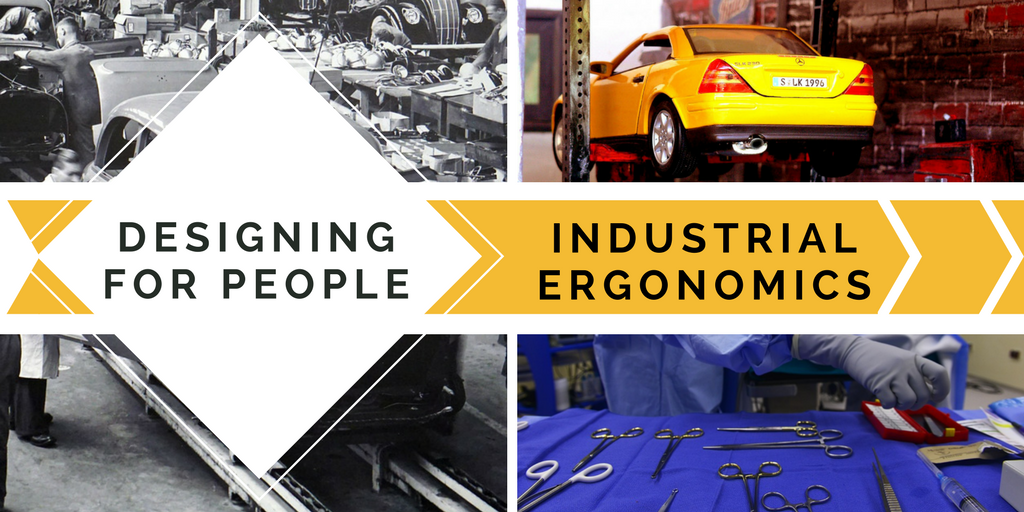Lawson Brandis – Environmental Specialist

Ergonomics is most commonly associated with an office setting. Industrial ergonomics, however, is concerned with the industrial setting, involving more manual tasks and adapting their associated workplaces to human abilities and natural body movements.
What is Ergonomics?
The practice of ergonomics is about taking proper account of the interactions between products, systems and processes, and the people who use them. This means designing in a way that incorporates how people will use something and not simply in a way that works.
While modern ergonomics concerns itself with human wellbeing first, and productivity second, this wasn’t always the case.
Early Ergonomics
The earliest examples of ergonomics come from Ancient Greece where evidence suggests the use of ergonomic ideals in the design of tools and workplaces. Hippocrates (460 BC – 370 BC), the famous Classical Greek physician, described how surgeon’s workplaces should be designed and how tools should be arranged (Marmaras, Poulakakis, & Papakostopoulos, 1999).

In the 19th century, Frederick Taylor pioneered the “scientific management” method (Taylorism), which proposed a way to find the optimum method of carrying out a task. Taylor found that he could, for example, triple the amount of coal that workers were shoveling by incrementally reducing the size and weight of their shovels until the fastest shoveling rate was reached. Frank and Lillian Gilbreth expanded Taylor’s methods in the early 1900s to develop the “time and motion study”. They aimed to improve efficiency by eliminating unnecessary steps and actions. By applying this approach, the Gilbreths reduced the number of motions in bricklaying from 18 to 4.5, allowing bricklayers to increase their productivity from 120 to 350 bricks per hour (Meister, 1999).
Industrial Ergonomics in the 20th Century
At the first Conference on Scientific Organization of Labour in 1921, Vladimir Bekhterev and Vladimir Myasishchev criticised Taylorism. Bekhterev stated that “the ultimate ideal of the labourproblem…is in such organisation of the labour process that would yield a maximum of efficiency coupled with a minimum of health hazards, absence of fatigue and a guarantee of the sound health and all-round personal development of the working people” (Moray, 2005). This was the beginning of ergonomics as we know it today.
Industrial Ergonomics in Action
Bekhterev and Myasishchev were describing the concept of designing for people, not simply how something will work at a base level. This is the key concept of modern ergonomics.

For example, in 2017 the International Journal of Industrial Ergonomics published an article showing how changing the design of espresso tampers can help reduce the risk of back and upper limb injury (Gregory & Romero, 2017). An espresso tamper is a rather innocuous, simple tool, however, by applying ergonomic principals to its design researchers were able to offer an improvement.
This concept can also be seen in car servicing. It’s possible to service a car while it sits on the ground however it is dark, difficult to maneuver and is restricted to people slim enough to fit under the car.

The first ergonomic development in this field was known as the ground lift. A ground lift is simply an excavation that a vehicle can be driven over, allowing the mechanic to stand under the car. While a simple and effective solution, ground lifts were hard to light and quite expensive, and thus not viable for many businesses. The next development was the above ground lift. An above ground lift allows mechanics to walk under a car without having to walk into a hole, which is a cheaper, easier solution. Designing products and systems while keeping in mind how they will be used is key to maximising ergonomics and efficiency.
Industrial ergonomics has come a long way and is now a massive field of study with research into possible improvements across a range of workplaces occurring all the time. If you are interested in learning more about industrial ergonomics or would like to find out how to implement good ergonomics at your workplace, give Integrate Sustainability a call (08) 9468 0338 or email enquiries@integratesustainability.com.au.

References
Gregory, D. E., & Romero, S. E. (2017). Can the use of an alternatively designed tamper alter spine posture and risk of upper limb injury while tamping espresso? International Journal of Industrial Ergonomics. Retrieved from https://doi.org/10.1016/j.ergon.2017.07.008
Marmaras, N., Poulakakis, G., & Papakostopoulos, V. (1999). Ergonomic design in ancient Greece. Applied Ergonomics, 30(4), 361-368. Retrieved from https://doi.org/10.1016/S0003-6870(98)00050-7
Meister, D. (1999). The History of Human Factors and Ergonomics. CRC Press.
Moray, N. (2005). Ergonomics: The History and Scope of Human Factors. Routledge.

